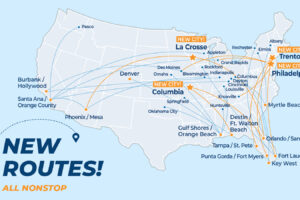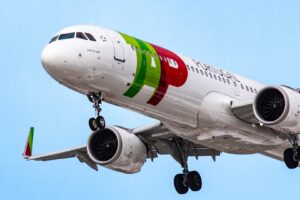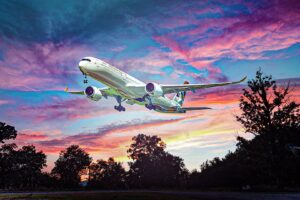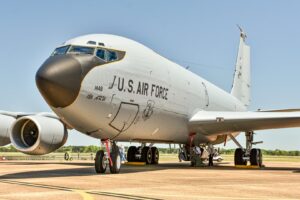
SITA Europe president, Segio Colella, unwraps some of the biggest tech trends in the aviation industry.
Air travel is changing fast. Passenger numbers are soaring, with 8.2 billion travellers expected by 2037, and new tech is making the journey smoother, safer, and more sustainable.
Artificial intelligence (AI), biometrics, and automation aren’t just buzzwords. They’re revolutionising how we fly.
In our most recent SITA 2024 Air Transport IT Insights report, we highlighted the biggest trends shaping aviation. The focus? Security, efficiency, and a seamless passenger experience. But there are challenges too, such as cyber threats, operational complexity, and the sheer pace of change. Here’s what’s shaking up the industry.
CYBERSECURITY IS THE INDUSTRY’S TOP PRIORITY
The more digital we get, the bigger the security risks. Airlines and airports are a goldmine for cybercriminals, from passenger data to flight operations. One attack can cause major disruption, financial loss, and reputational damage. No one can afford that.
The good news is that the industry is fighting back. AI is stepping up as a frontline defence, with 78% of airlines and 52% of airports using it to detect and block threats before they hit. Machine learning helps predict and shut down vulnerabilities before they become a problem.
Airlines are leading the charge in this sense, likely because they operate globally and face a wider range of cyber threats.
Security Operations Centres (SOCs) are another weapon in the fight, with 87% of airlines and 77% of airports rolling them out. These hubs monitor threats in real time, improving response times and keeping systems running smoothly.
And of course, tried-and-true security measures like multi-factor authentication (MFA) and encryption aren’t going anywhere.
Cyber threats are becoming more sophisticated, with ransomware and phishing attacks on the rise. Airlines are investing in stronger firewalls, endpoint security, and zero-trust architectures to mitigate risks. With an increasing reliance on cloud-based systems, securing remote access and preventing data leaks is more critical than ever.
The bottom line? Cybersecurity is no longer optional. It’s mission-critical.
AI IS MORE THAN JUST A BUZZWORD
AI is shaking up aviation. It’s optimising everything, from maintenance and crew scheduling to customer service. Airlines are already all in, with 74% using AI to improve internal operations. Chatbots are answering passenger queries 24/7, while AI-powered tools predict delays before they happen.
Airports, however, are falling behind. Only 18% are using AI for passenger-facing services, and none are tapping into its potential for strategic decision-making. This presents a big opportunity for further improvement.
AI can crunch vast amounts of data to improve operations, security, and the passenger experience. The 26% of airports still sitting on the AI sidelines? Time to jump in.
AI is also reshaping baggage handling. Smart tracking systems powered by AI can predict and prevent lost luggage by monitoring real-time movements and scanning for anomalies.
More accurate forecasting and better load balancing make sure that luggage arrives at the right place, at the right time. Airports and airlines that use AI-driven baggage solutions can cut lost luggage rates, saving costs and improving passenger satisfaction.
But AI isn’t just about automation. It’s also personalising the travel experience. Airlines are using AI-driven recommendations for seat selection, upgrades, and inflight services based on passenger preferences.
AI-powered digital assistants help travellers navigate airports, translating languages and providing real-time boarding updates.

STRONGER IT INFRASTRUCTURE RESULTS IN SMOOTHER TRAVEL
AI, biometrics, and digital transformation mean nothing without solid IT infrastructure. That’s why 42% of airlines list upgrading IT systems as a top priority. Faster, more secure networks keep everything running seamlessly, from check-in kiosks to boarding.
Airports are investing even more with 67% planning to boost their IT infrastructure. They need high-speed connectivity for everything from 5G-powered baggage tracking to digital systems that help drive sustainability initiatives.
The shift to cloud-based systems is also growing, making real-time data sharing easier across the industry.
Future-proofing IT isn’t just about speed and efficiency. It’s about making air travel better for everyone. It’s not just for passengers, better IT infrastructure also improves real-time aircraft maintenance, automated air traffic control, and more seamless airline-airport co-ordination.
AVIATION’S GREEN REVOLUTION
Sustainability isn’t a choice anymore. It’s an urgent priority. Airlines and airports are pushing hard to cut carbon emissions and meet the industry’s net-zero targets.
An impressive 85% of the world’s commercial airlines are investing in fuel-efficient aircraft, while 82% are optimising flight operations to save fuel. SAF adoption is rising fast, with 62% of airlines now using it, reaching the highest level since 2023.
When it comes to SAF, airports are catching up. Only 22% currently support SAF refuelling, but that’s up 9% from last year. Instead, many are focusing on energy efficiency. Nine in ten are upgrading HVAC systems and optimising power use. Others are cutting emissions from vehicle fleets (74%) and ramping up recycling programmes (72%).
Technology is playing a role in sustainability, too. AI-driven fuel optimisation tools are helping pilots take more fuel-efficient routes. Digital twins (virtual models of real-world operations) are helping airports fine-tune energy efficiency and reduce waste. Every piece of technology helps aviation get one step closer to a greener future.
There’s also growing momentum for electric and hydrogen-powered aircraft. While still in early development, these innovations could revolutionise air travel, drastically cutting emissions and dependence on fossil fuels.
Sustainability efforts are ramping up. The challenge? Scaling these solutions fast enough to make a real impact.
BIOMETRICS ARE HELPING US SAY GOODBYE TO LONG LINES
Biometrics are transforming travel. No more fumbling for passports or boarding passes, just a quick facial scan, and you’re on your way. Digital identity solutions are already reducing boarding times by 30% and wait times by up to 60%.
Airlines know this is the future. Three-quarters plan to roll out biometric tech by 2027. Airports are on board too, with 43% making biometric identity management a top investment priority.
Of course, new tech brings new challenges. Data privacy and security remain major concerns, flagged by 45% of airlines and 39% of airports. The industry needs to make sure it provides the convenience while not compromising on security. That means building trust with passengers and ensuring data is handled responsibly.
Future biometric innovations may go beyond airports. Imagine using your digital identity for major events, hotel check-ins, and even duty-free shopping, all creating a seamless, secure, and personalised travel experience. The future of travel isn’t just faster. It’s smarter.
THE FUTURE OF AIR TRAVEL IS SMARTER, SAFER, AND MORE SEAMLESS
From AI-driven security to frictionless biometric check-ins, aviation is embracing tech to make travel better. Airlines and airports are investing big in cybersecurity, IT infrastructure, and sustainability. The pace of change is rapid, and those who don’t keep up will be left behind.
The takeaway? Travel is evolving. And the passenger experience is about to get a whole lot better. Technology isn’t just making flights more efficient, it’s changing the way we experience travel altogether.
With the right investments, the future of air travel will be cleaner, faster, and more connected than ever before.






